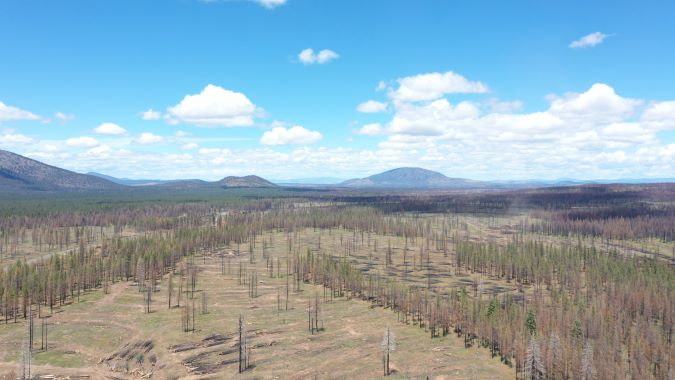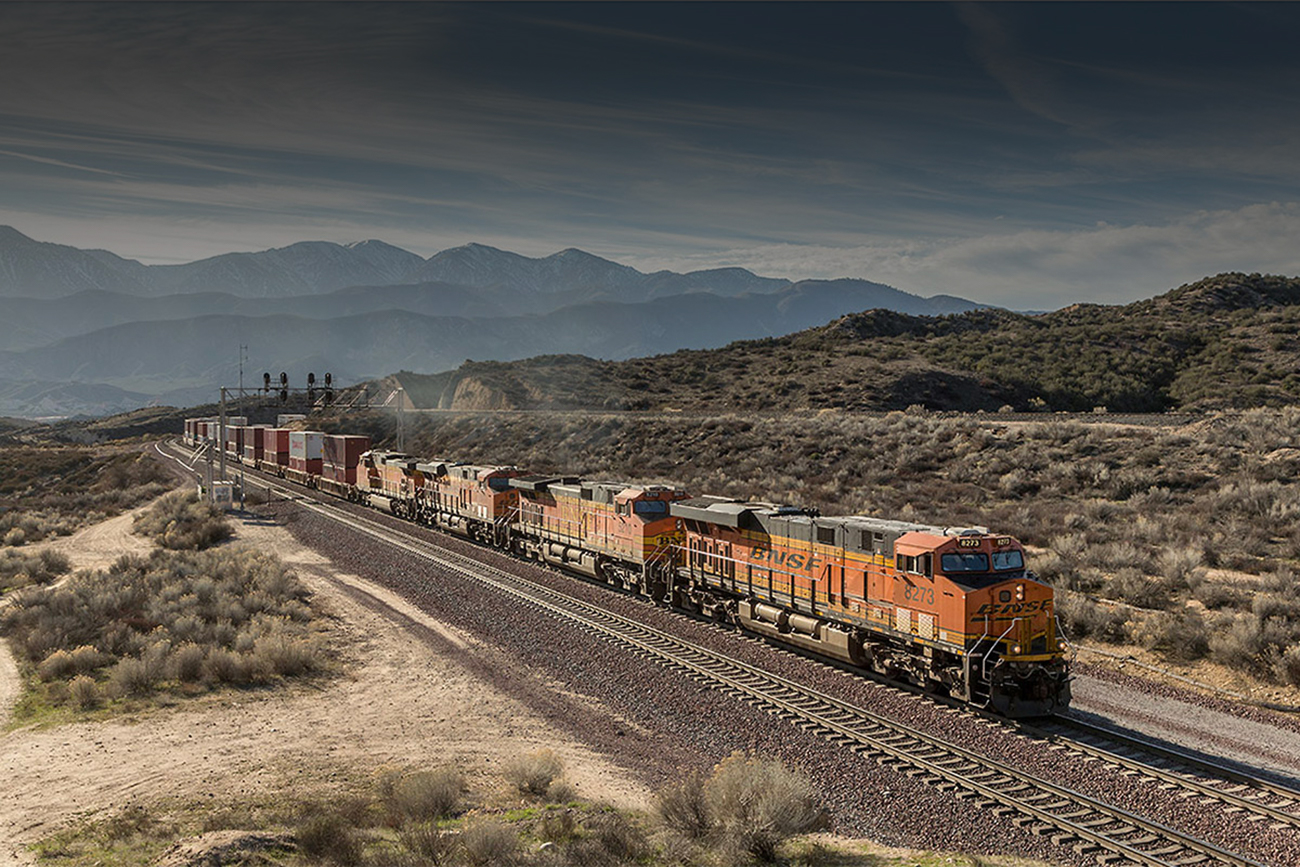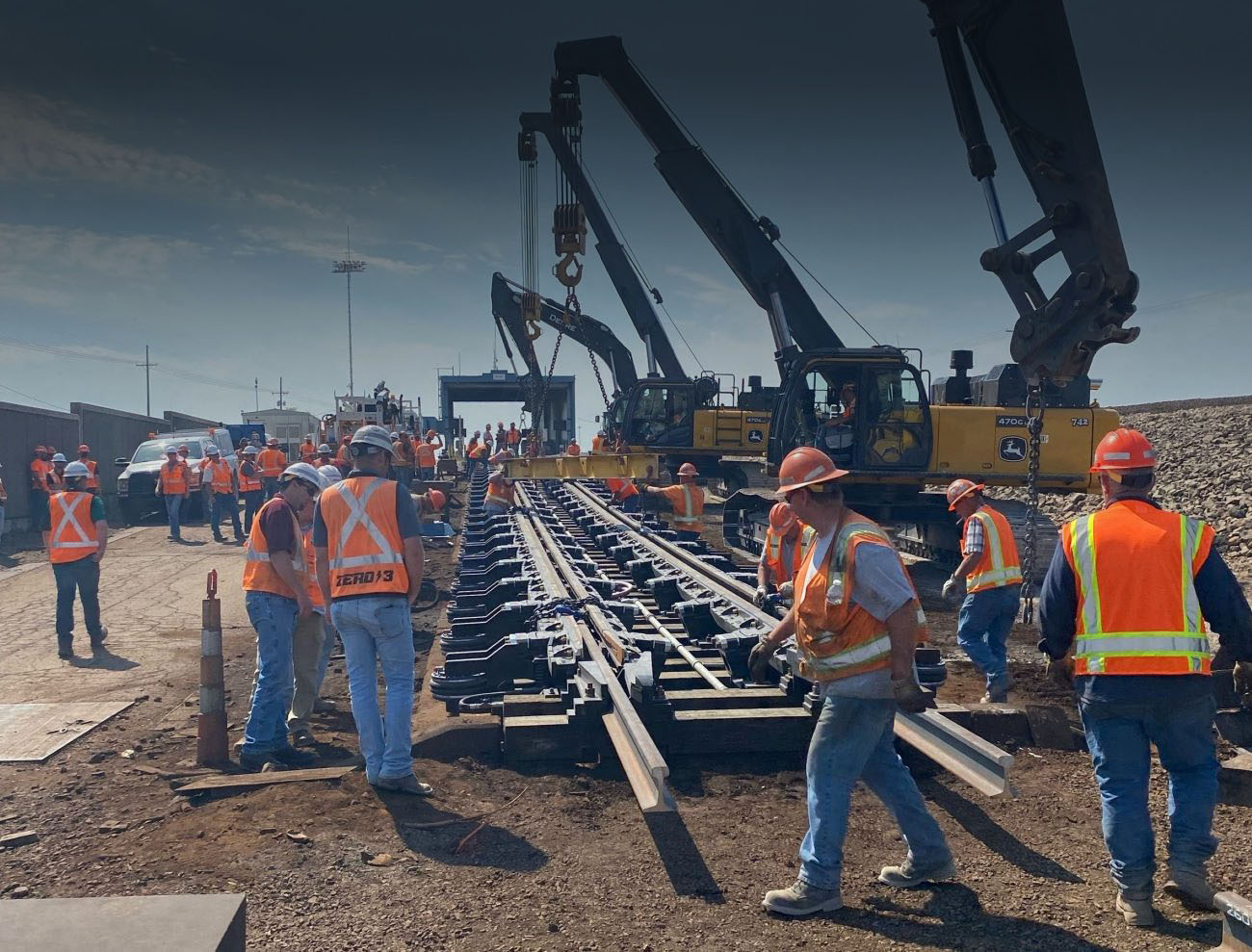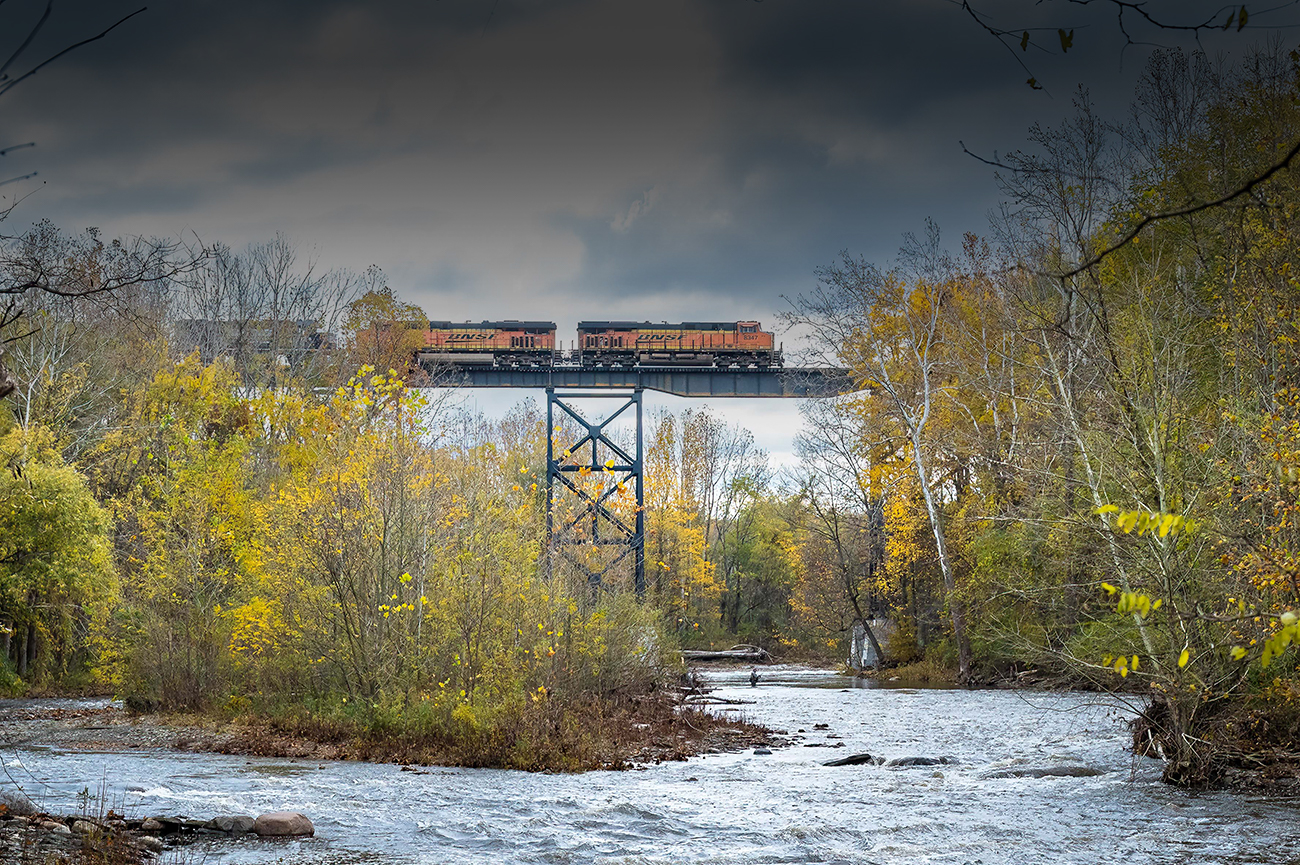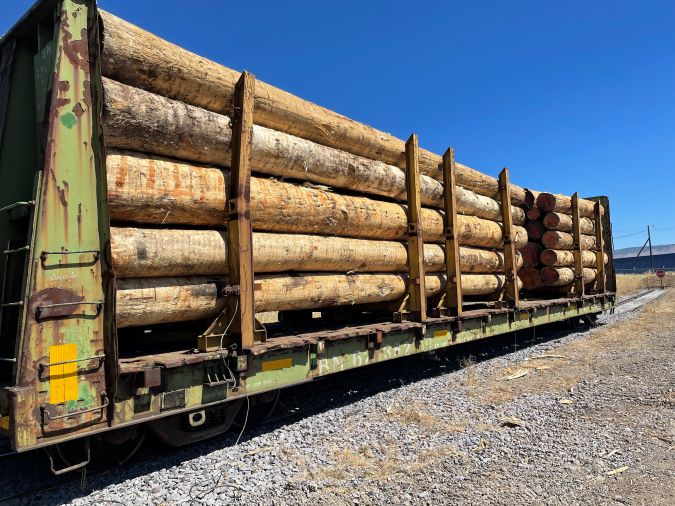
Logging success in the Northwest
When BNSF embarked on a proof-of-concept to ship raw timber from Northern California and Oregon to a sawmill in Wyoming, it could best be described as a “back to the future” moment.
In the early 1990s, predecessor Burlington Northern Railroad (BN) had log-bunk fixtures installed on bulkhead flatcars to enable the safe loading and transport of raw timber logs. But the concept wasn’t sustainable due to evolving market conditions where truck was a more popular option for these short-haul moves.
Fast forward to 2023. What’s old is new again.
Over the past few years, as wildfires ravaged Northern California, a surplus of charred trees and logs still suitable for sawing and milling into lumber was left. Forestry First needed a transportation partner to haul that timber to their mills. Considering the scope of the wildfires, it would take multiple entities collaborating. Enter the U.S. Forest Service, the National Wild Turkey Federation (NWTF) and BNSF.
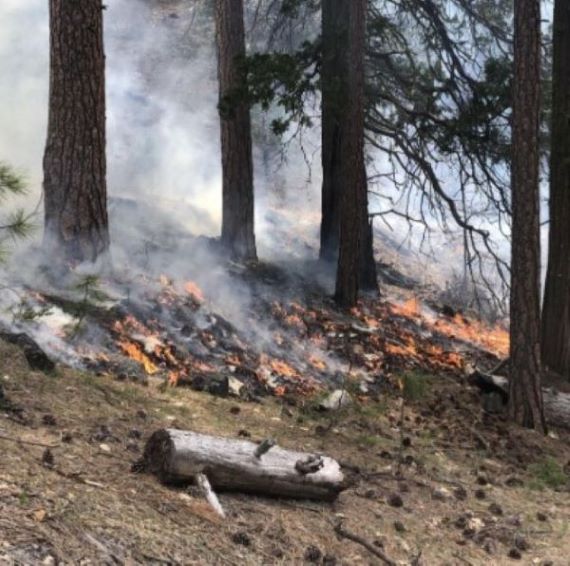
One of the triggers was how to sustain the critical milling infrastructure in the Black Hills National Forest in western South Dakota and portions of Wyoming. The forest had served as a primary source of Ponderosa Pine that local sawmills milled into finished lumber. But due to adjusted harvesting limitations, supplemental sources of timber were needed. That’s when they looked west.
“The magnitude of the problem in the West far surpasses the capacity of the local mills,” Sonja Merryman, spokeswoman for Forestry First, said. “With the Black Hills operations recently experiencing an increase in available capacity, we immediately took on the challenge to help combat the wildfire crisis in Oregon and California.”
With transloading occurring at both origin and destination, BNSF moved the logs from Klamath Falls, Oregon, via the Montana Rail Link, to Upton, Wyoming. Today, the mills are receiving the logs they need to maintain operations, plus the project supports forest restoration and habitat improvement for wildlife such as wild turkeys.
Overcoming equipment challenges
Gaining consensus on moving the timber by rail was one thing. Securing the necessary equipment was another.
“We scoured the network and were able to find only a few railcars that were equipped for these moves,” David Fischer, senior manager, equipment utilization for BNSF, said. “We found five bulkhead flatcars in storage that were still equipped with log bunks. We were able to get them quickly inspected and routed for loading.”
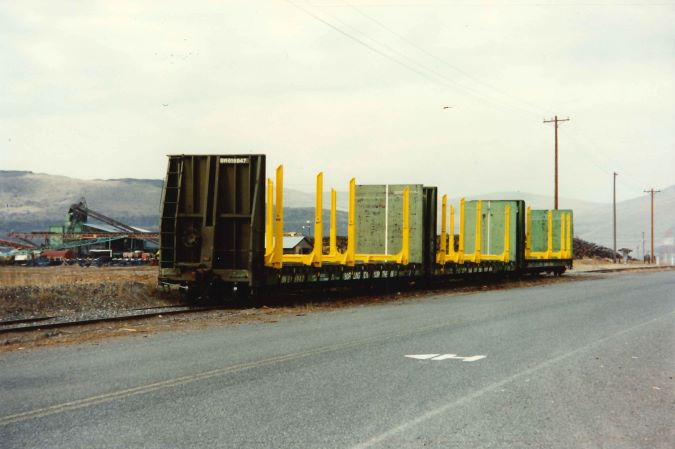
Some of these salvaged log bunks are those designed and created for the same purpose by BN in 1993. They allowed for a period of testing to work out the details required for safe movement.
The success of the initial shipments and the prospects of increased volumes prompted BNSF to work with Forestry First on the installation of additional log bunks to surplus BNSF bulkhead flat cars. To date, 67 cars have been fixtured. The project has been so well-received that Forestry First is collaborating with BNSF on plans to equip additional railcars with these fixtures.
So far this year, BNSF has moved about 200 railcars of timber to local operations in the Black Hills.
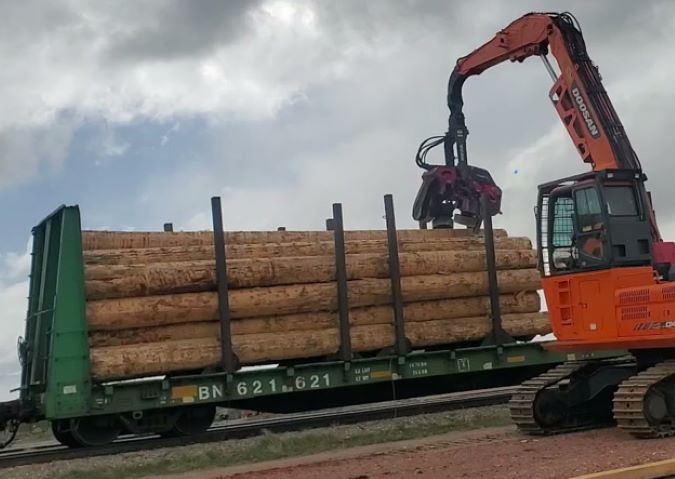
“It truly is like we’re going back to the future,” Blake Kotylak, Forestry First sales manager and account rep, said. “In 1993, BN commissioned the construction of these bunks to capture log shipment business. Now, due to environmental circumstances, we’ve been able to go back to that. We are testing shipping logs by rail and we’re proving that it works. And we’re excited because we’re serving the transportation needs of Forestry First while simultaneously supporting the health of forests in this region.”
The company has also been appreciative of BNSF’s support.
“This relationship with BNSF has exceeded my expectations,” Dan Buehler, resource forester, said. “From BNSF’s local train crews to the corporate staff we have worked with, all have helped us to get our rail project stood up and running. Transportation of logs from the West Coast was absolutely critical within the wildfire crisis strategy and would simply not be possible without the rail component. Thank you to BNSF for stepping in to help combat the wildfire crisis.”
